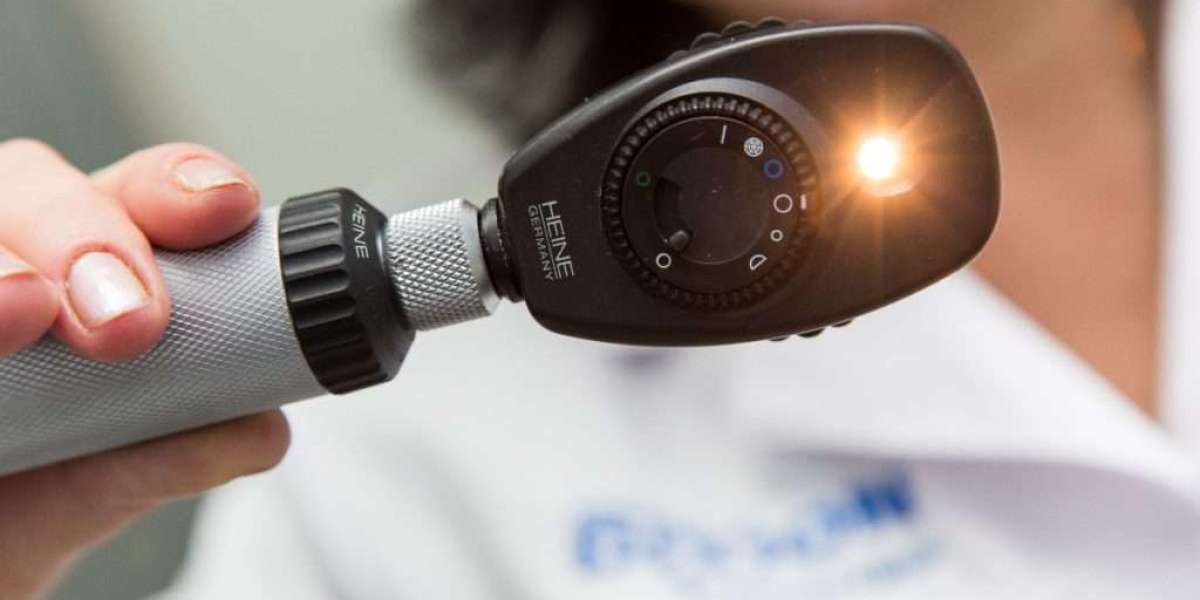Introduction
In a healthcare environment increasingly focused on cost-efficiency and value-based care, pricing plays a significant role in medical equipment procurement decisions. The ophthalmoscope market, in particular, is witnessing a rising demand for devices that not only offer superior performance but also deliver long-term value and affordability—especially for clinics, primary care settings, and small practices. This article explores current pricing trends in the ophthalmoscope market, the economic factors influencing buying behavior, and how clinics can ensure cost-effectiveness without compromising diagnostic accuracy.
Price Spectrum in the Ophthalmoscope Market
The price of ophthalmoscopes can vary greatly based on features, brand, build quality, and technological integration. Broadly, ophthalmoscopes fall into three categories based on price:
1. Basic Direct Ophthalmoscopes
Price Range: $100–$300 (USD)
These are manual, optical devices without digital or imaging capabilities.
Ideal for student use, basic retinal screenings, and low-volume clinics.
2. Mid-Range Digital and Handheld Devices
Price Range: $300–$800
Offer LED illumination, rechargeable batteries, and sometimes smartphone compatibility.
Suitable for general practice, community clinics, and mobile health programs.
3. Advanced Digital Ophthalmoscopes
Price Range: $1,000–$3,000+
Equipped with image capture, storage, sharing, and even AI analysis tools.
Preferred by ophthalmologists, optometrists, and telemedicine providers.
The wide range in pricing reflects the market’s diversity and allows clinics to choose devices that align with both their clinical needs and budgetary constraints.
Factors Affecting Ophthalmoscope Pricing
a) Technology Integration
Digital enhancements such as high-resolution imaging, cloud connectivity, and AI-based screening tools contribute significantly to the device’s price. While these features increase upfront cost, they often provide greater long-term efficiency and return on investment.
b) Brand and Manufacturing Quality
Established brands like Welch Allyn, Heine, Keeler, and Zeiss often command higher prices due to their proven reliability, build quality, service networks, and extended warranties.
c) Customization and Accessories
Some ophthalmoscopes are sold as standalone tools, while others are offered in kits with replacement bulbs, spare batteries, lens filters, and carrying cases—adding to the overall cost.
d) Geographic Variations
Device pricing can vary across countries due to import duties, local taxes, shipping costs, and regional distribution margins. For example, ophthalmoscopes may be significantly more affordable in Asia or Latin America than in North America or Europe.
Cost-Effectiveness for Clinics: Key Considerations
1. Assess Usage Needs
Small clinics or general practitioners conducting basic screenings may not need high-end digital models.
Investing in mid-range models with good optics and battery life can offer the best cost-to-value ratio.
2. Evaluate Total Cost of Ownership (TCO)
Beyond the purchase price, clinics should consider:
Maintenance and repair costs
Battery and bulb replacements
Software subscription fees (for digital models)
Training and support costs
TCO analysis helps determine whether a device is economically viable over its full operational life.
3. Consider Financing or Leasing
For resource-constrained clinics, leasing or financing options provided by manufacturers or distributors can make high-quality devices more accessible.
4. Utilize Bundled Purchase Programs
Some suppliers offer bundle deals for clinics purchasing multiple diagnostic tools (e.g., ophthalmoscope + otoscope + sphygmomanometer), reducing the overall cost per unit.
Benefits of Affordable Ophthalmoscopes
Expands access to routine eye exams, especially in rural or low-income areas.
Helps prevent disease progression by enabling early diagnosis at the primary care level.
Supports training and capacity building for healthcare workers in clinics and nursing colleges.
Encourages integration of vision screening into general healthcare workflows without heavy investment.
Market Trends in Affordable Devices
The ophthalmoscope market is responding to the need for cost-effective devices in several ways:
Emergence of local manufacturers in India, China, and Africa offering quality devices at lower prices.
Refurbished equipment sales channels gaining popularity among startups and small practices.
Increasing use of open-source software in digital ophthalmoscopes to reduce licensing costs.
Growth of AI-assisted smartphone-based models providing advanced functionality at competitive prices.
Challenges in Balancing Cost and Quality
While low-cost models make eye diagnostics more accessible, clinics must be cautious about:
Compromised optical clarity
Poor durability
Lack of after-sales service
Incompatibility with modern diagnostic workflows
To avoid these pitfalls, purchasing from reputable suppliers, checking user reviews, and requesting demo units is recommended.
Conclusion
As vision care becomes an integral part of primary healthcare, cost-effective solutions in the ophthalmoscope market are more important than ever. Clinics must balance affordability with functionality by selecting devices that meet their diagnostic needs without overspending. The growing availability of mid-range and digital portable models, combined with flexible purchasing options, ensures that clinics of all sizes can now participate in early eye disease detection—contributing to better outcomes and greater patient satisfaction.








